Shoulders - this is one of the most popular muscle groups that strive to pump up and increase in volume literally every man who visits the gym. This is due to the fact that a man's beautiful and broad shoulders are one of the main advantages that others pay attention to. Beautiful and slightly pumped up shoulders in girls, give her a great sexuality and beauty of the figure.
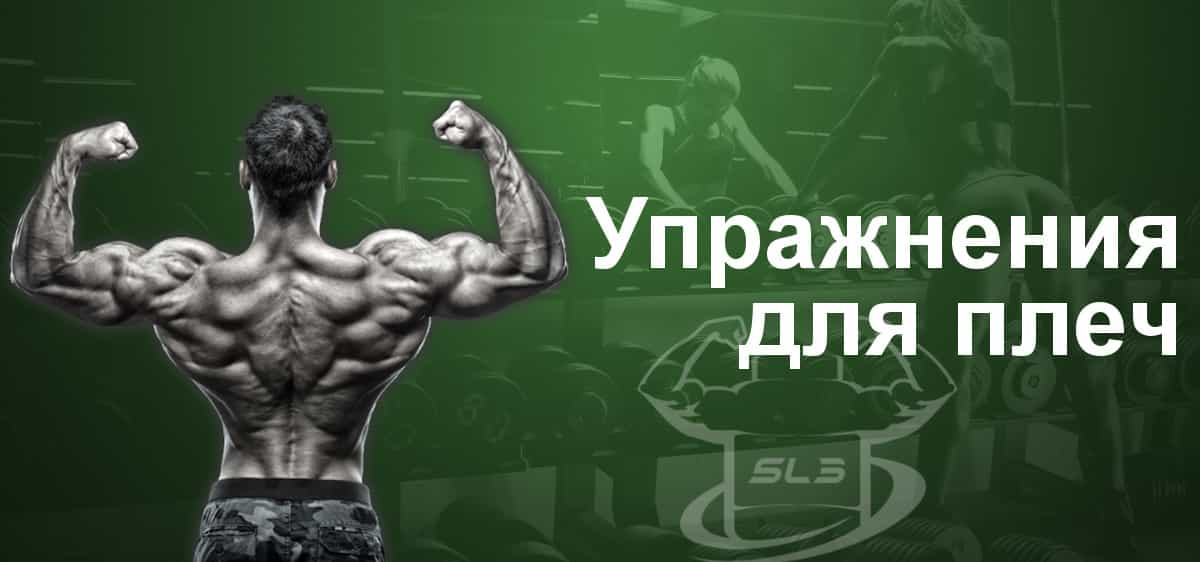
First let's look at the structure of the shoulder girdle muscles:
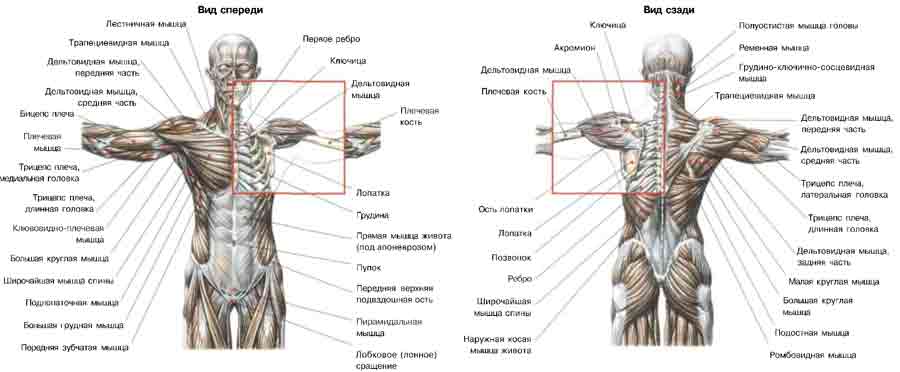
Exercises for training the muscles of the shoulder girdle
The shoulder muscle , or deltoid muscle, consists of three muscle bundles - the anterior bundle (anterior Delta), the middle bundle (middle Delta), and the posterior bundle (posterior Delta). For each of these bundles of the shoulder muscle, specialized exercises are designed that effectively load one or another part of the deltas. These exercises will be discussed below.
1. Bench press bar from behind the head while sitting
The barbell press from behind the head is an effective exercise for influencing the muscles of the shoulder girdle. The barbell press from behind the head mainly loads the middle bundles of the deltoid muscles and the upper part of the trapezius muscles, as well as the triceps and anterior dentate muscle. The rhomboid muscles, subacute, small round and supraspinatus are also subjected to load, although less.
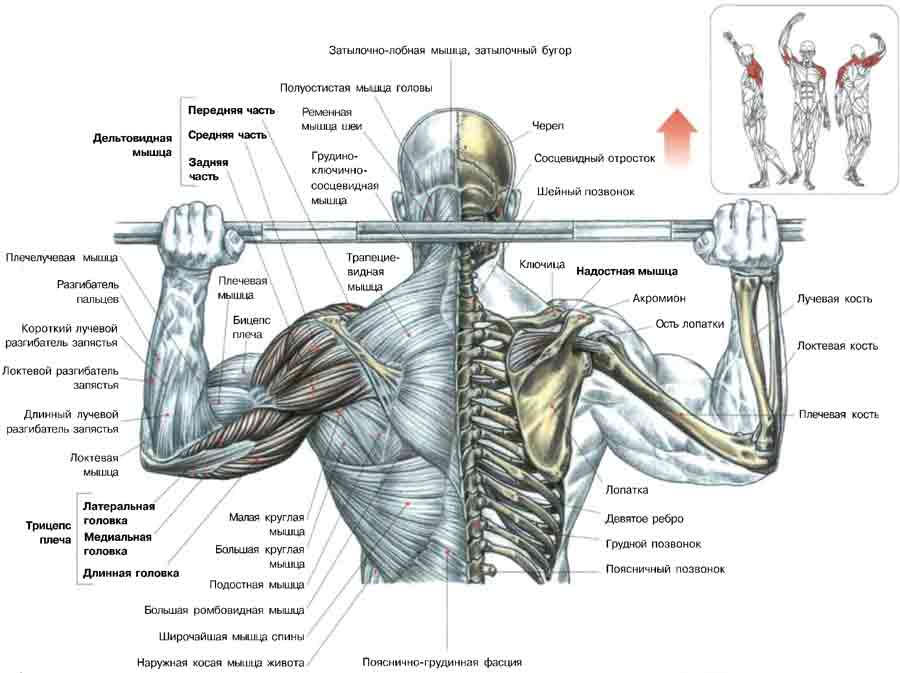
Mechanics of performing the barbell press from behind the head:
Exercise barbell press from behind the head is performed sitting on a bench or standing. Put the bar on the shoulders behind the head, holding the grip on top:
- take a breath and push the bar up over your head;
- at the end of the movement to make an exhalation.
Keep your back straight, without slouching or bending too much in the lower back. You can protect yourself from injuries by placing the bar bar on the rack. There are many simulators that allow you to perform this exercise in a simplified form and in a safe environment.
2. Bench press bar from chest
The chest press is the most basic exercise that puts the most stress on the anterior and middle deltoid muscles, the clavicular part of the pectoral muscle, the upper trapezius muscles, the triceps, the anterior dentate muscles, and the deep-seated supraspinatus muscle.
The chest press can be performed in either a sitting or standing position. When performing this exercise in a standing position, do not bend the lower back too much.
To increase the load on the front of the deltoid muscles, put your elbows slightly forward. For a more intense effect on the middle parts of the deltoid muscles, it is better to push the elbows apart (spread them apart).
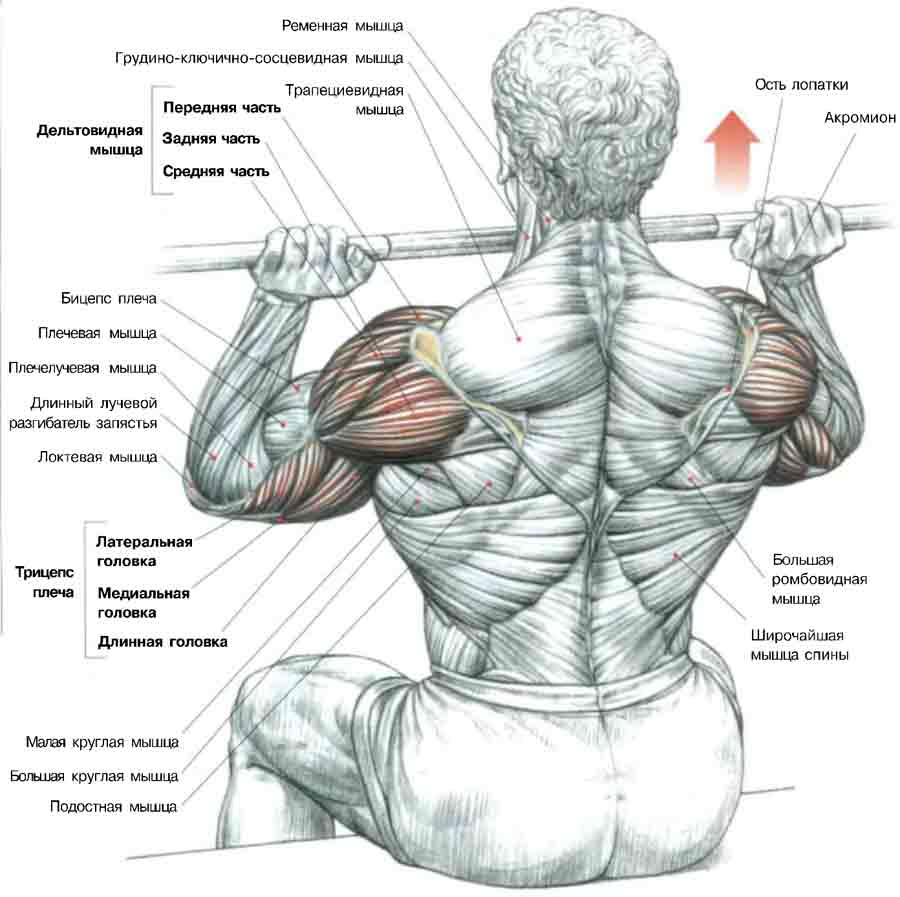
Mechanics of performing the barbell press exercise from the chest:
The chest press can be performed either standing or sitting. The bar must be held in front of you with a grip from above, placing it on the upper part of the chest:
- take a breath and squeeze the bar vertically up;
- to make the exhalation at the top of the movement.
Options for performing the exercise barbell press from the chest :
1. the grip is narrow, elbows forward: the front parts of the deltoid muscles, the clavicular part of the pectoralis major muscle and the long head of the triceps are mainly used.
2. the grip is wide, the elbows are set aside: the front and middle parts of the deltoid muscles and the upper parts of the pectoral muscles are mainly involved.
3. Dumbbell bench press sitting
The sitting dumbbell press is an exercise primarily designed to train the middle parts of the deltoid muscles, as well as the upper parts of the trapezius muscles, the anterior crenellated muscles, and the triceps.
It can be performed alternately with one or the other hand, and alternately with each hand separately.
Only trained athletes can perform it standing up.
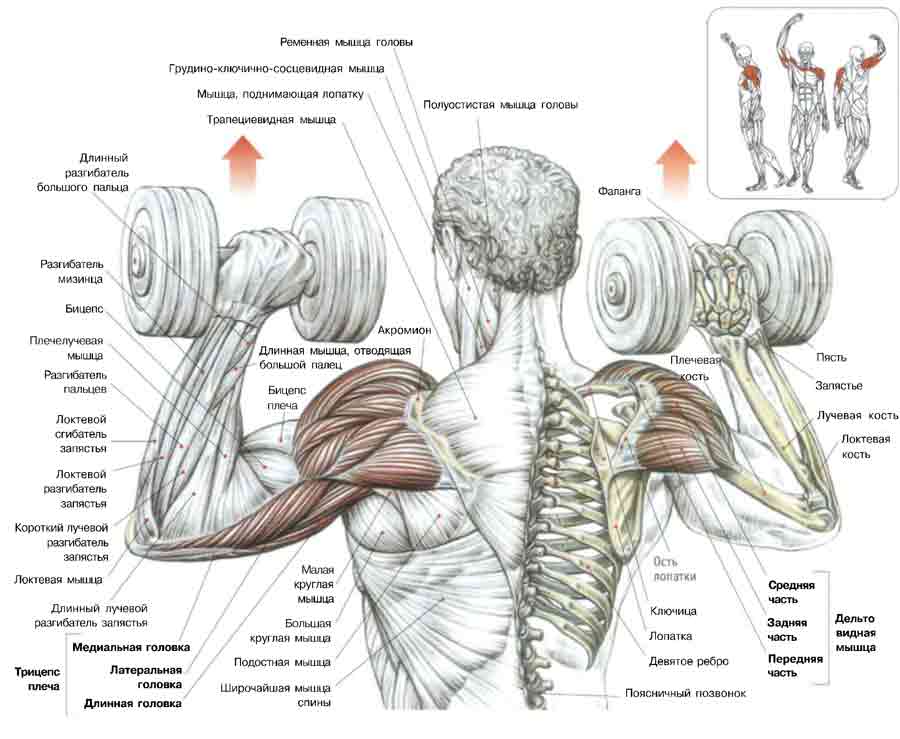
Mechanics of performing the dumbbell press sitting exercise:
Sitting dumbbell press is performed while sitting on a bench. Hold the dumbbells with a grip at shoulder level, palms turned forward:
- take a breath and squeeze the dumbbells up to straight arms;
- at the end of the movement to make an exhalation.
4. Alternate dumbbell press with wrist turns
Alternate dumbbell press with wrist turns-this exercise develops the deltoid muscle, mainly its front part, as well as the clavicular part of the pectoralis major muscle, triceps, and anterior dentate muscle.
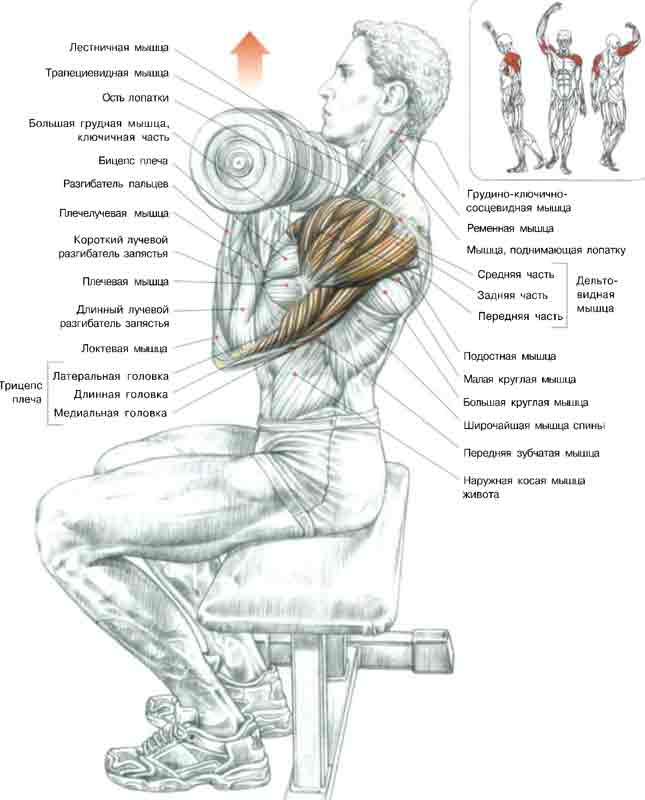
Mechanics of performing the exercise alternate dumbbell press with turns of the wrists:
The exercise is performed sitting on a bench. Keep your back straight and turn your arms with your elbows forward. Keep dumbbells at shoulder level in the supination position (thumbs turned outwards):
- take a breath and squeeze the dumbbells vertically, turning the wrist 90° so that the hands take the pronation position (thumbs turned inwards);
- at the end of the movement to make an exhalation.
Options for performing the exercise alternate dumbbell press with turns of the wrists:
This exercise can be performed sitting, leaning on the back of the bench, so as not to bend the lower back too much.
Only trained athletes can perform it standing up:
"alternately with one hand and the other;
- alternately - with each hand separately.
5. Lifting dumbbells to the sides in a forward tilt
Lifting dumbbells to the sides in a forward tilt is an effective exercise that mainly involves the back of the deltoid muscles. By bringing the shoulder blades together at the end of the movement, you will engage the middle and lower parts of the trapezius muscles, rhomboid muscles, large round and subacute muscles.
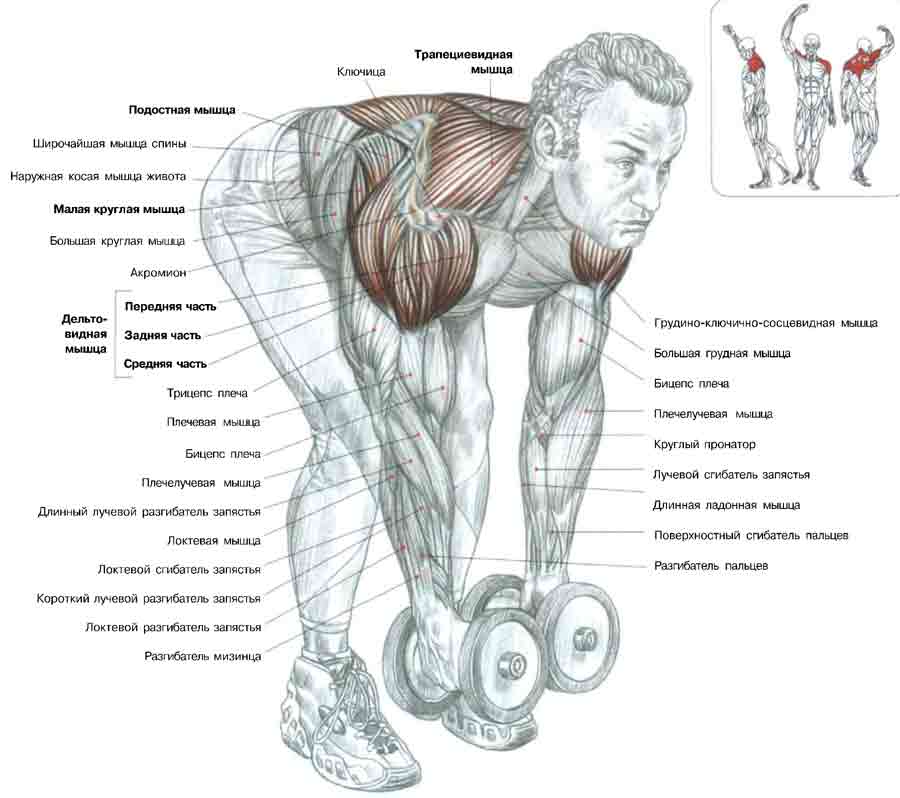
Mechanics of the exercise lifting dumbbells to the sides in a forward tilt:
The exercise is performed standing up. Legs slightly apart and bend at the knees, the torso is tilted forward, the back is bent, dumbbells are held in the hands slightly bent at the elbows:
- take a breath and pull the dumbbells to the sides;
- at the end of the movement to make an exhalation.
6. Lifting dumbbells to the sides
Lifting dumbbells to the sides is a very effective exercise that develops the middle part of the deltoid muscle, which consists of several bundles attached to the humerus. Using a light weight allows the hands to perform more precise movements necessary for full impact on the middle part of the deltoid muscle, which is especially effective in the initial phase of execution in all positions (hands along the torso, behind the buttocks, in front of the hips).
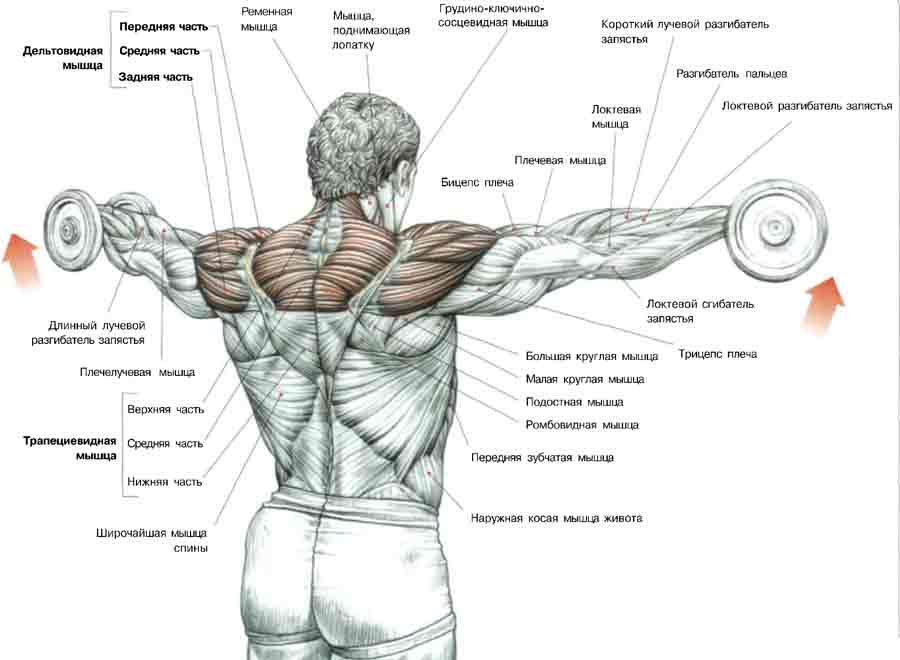
It should be noted that lateral lifts also develop the supraspinatus muscle, located under the deltoid muscle in the supraspinatus fossa of the scapula and attached to the large humerus.
During lateral ascents, the Cirrus bundles of the middle part of the deltoid muscle, which has great strength but little potential for contraction, work together with the anterior and posterior parts of the deltoid muscle to bring the arm to a horizontal position.
The amount of actin* and myosin* in the fibers of the fusiform muscles corresponds to their cross-section (A). the Amount of actin and myosin in the fibers of the Cirrus muscles (A) corresponds to the sum of the oblique sections A1 and A2.
* Actin and myosin are muscle fiber proteins that are the main contractile elements with a maximum contraction force equal to 5 kg / cm2 of cross-section.
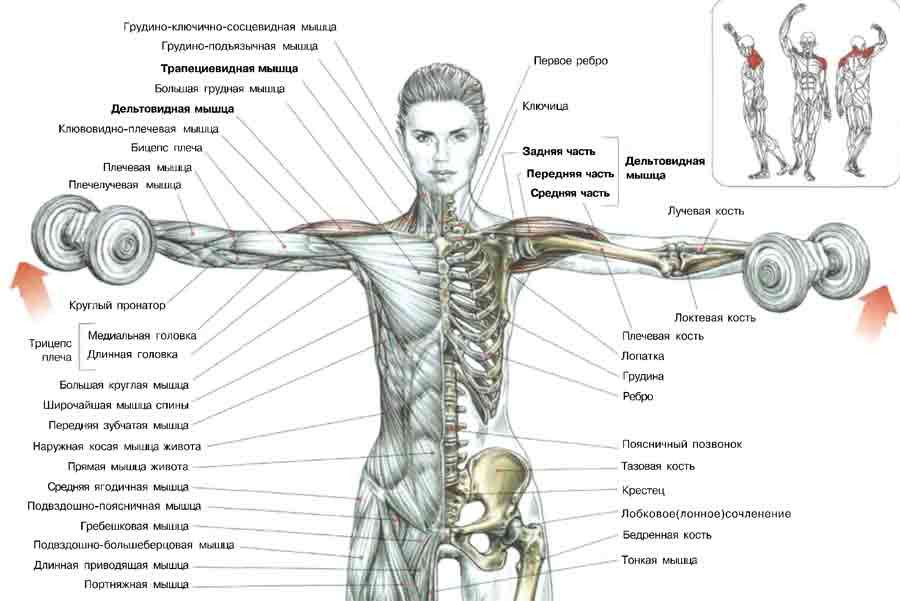
Mechanics of the exercise lifting dumbbells to the sides:
The exercise is performed standing up. Legs slightly apart. Back straight, arms along the body. The arms with dumbbells are slightly bent at the elbows:
- take a breath and raise your arms to the sides to a horizontal position;
at the end of the movement to make an exhalation.
MOVEMENT PHASES: OPTIONS
1. The arms are raised to a horizontal position: use of the deltoid muscle.
2. the Arms are raised above the horizontal position: the upper and front parts of the trapezius muscle are involved.
By raising your arms above the horizontal position, you can develop the upper part of the trapezius muscle. Many people prefer not to go above the horizontal line in order to primarily focus the load on the middle part of the deltoid muscles. Never use too heavy a weight in this exercise. It is repeated 10 to 25 times with a short pause for rest. Changing the trajectory to achieve a burning sensation gives better results. For greater intensity, hold your hands in a horizontal position for a few seconds between repetitions, observing the isometric tension.
7. Lifting dumbbells forward alternately
Lifting dumbbells forward alternately-this exercise affects mainly the anterior part of the deltoid muscle, the clavicular part of the pectoralis major muscle, and to a lesser extent the middle part of the deltoid muscle.
All hand lifts also involve muscle agents that link the shoulder blade to the chest, such as the anterior dentate muscle and the rhomboid muscles that stabilize the movement of the humerus.
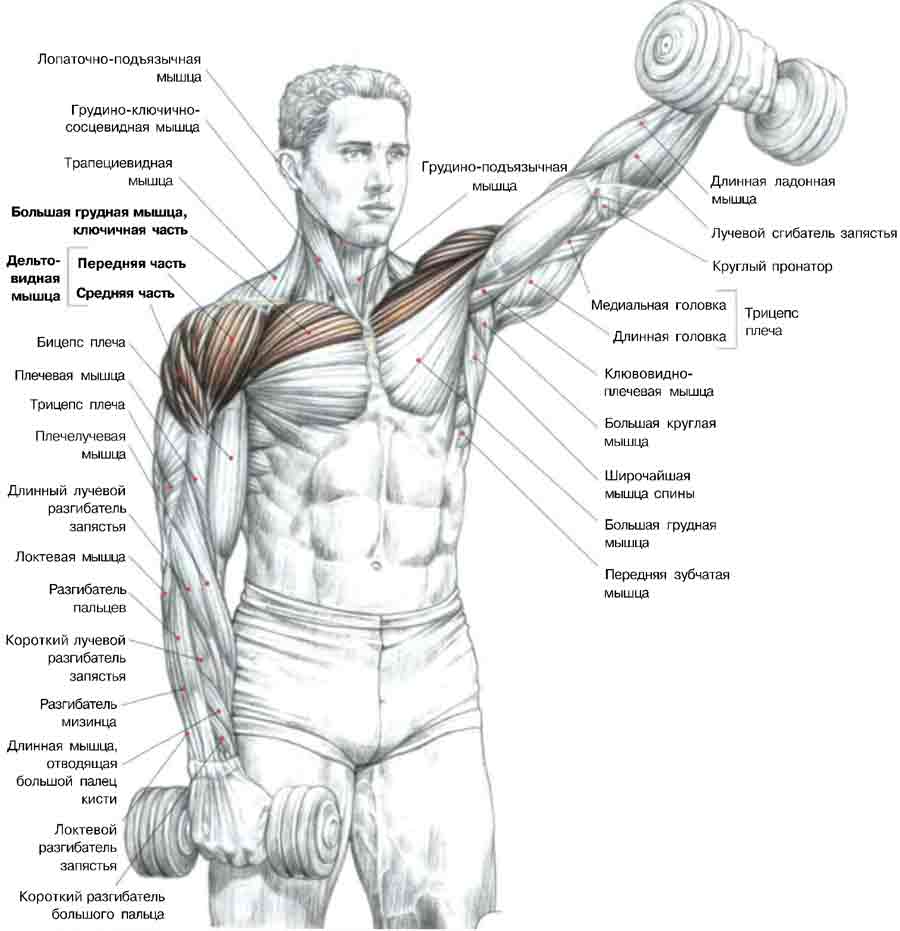
Mechanics of the exercise lifting dumbbells forward:
The exercise is performed in a standing position. Spread your legs slightly. Hold dumbbells with a grip from above in front of the hips:
- take a breath, first raise one hand forward to shoulder level, and then lower it, and perform the same movement with the other hand;
at the end of the movement to make an exhalation.
8. Lifting the dumbbell to the side with one hand while lying on your side
Lifting a dumbbell to the side with one hand while lying on your side-the highlight of this exercise is that the main effort is concentrated at the beginning of the movement. The best results can be achieved by doing 10-20 repetitions.
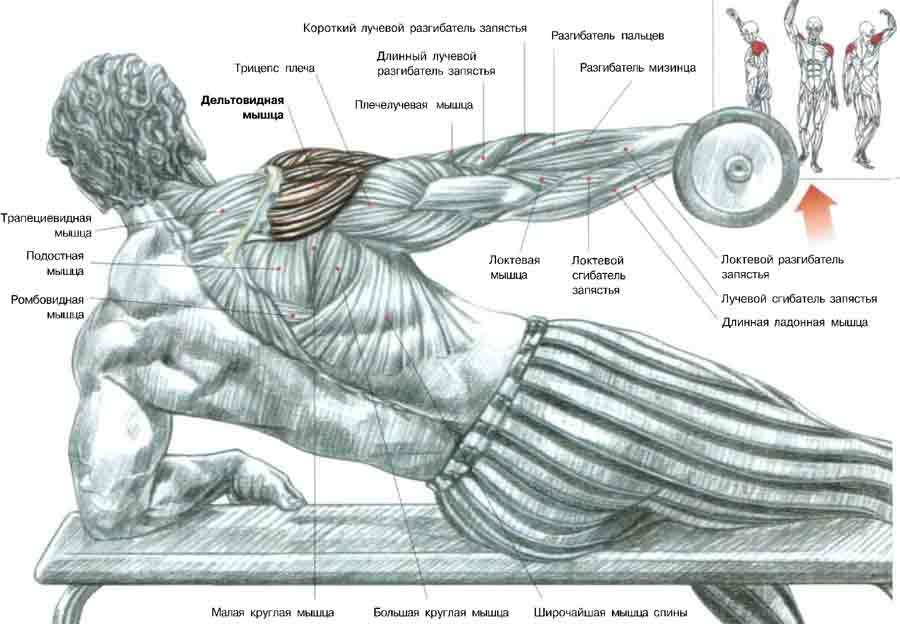
Mechanics of the exercise lifting the dumbbell to the side with one hand while lying on your side:
The exercise is performed in a reclining position sideways on the floor or on a bench. Hold the dumbbell with a grip on top:
- take a breath and raise your hand up to a vertical position;
- to make the exhalation at the end of the movement.
9. The lifting of the weight forward
Lifting the barbell forward is a very effective exercise that involves the front part of the deltoid muscles, the upper part of the pectoral muscles, the subacute muscle, and to a lesser extent the trapezius muscles, the front serrated muscles, and the short head of the biceps.
By lifting the bar above shoulder level, you will increase the load on the back of the deltoid muscle.
This exercise can also be performed with any simulator with a lower block, turning your back to it and passing the cable between your legs.
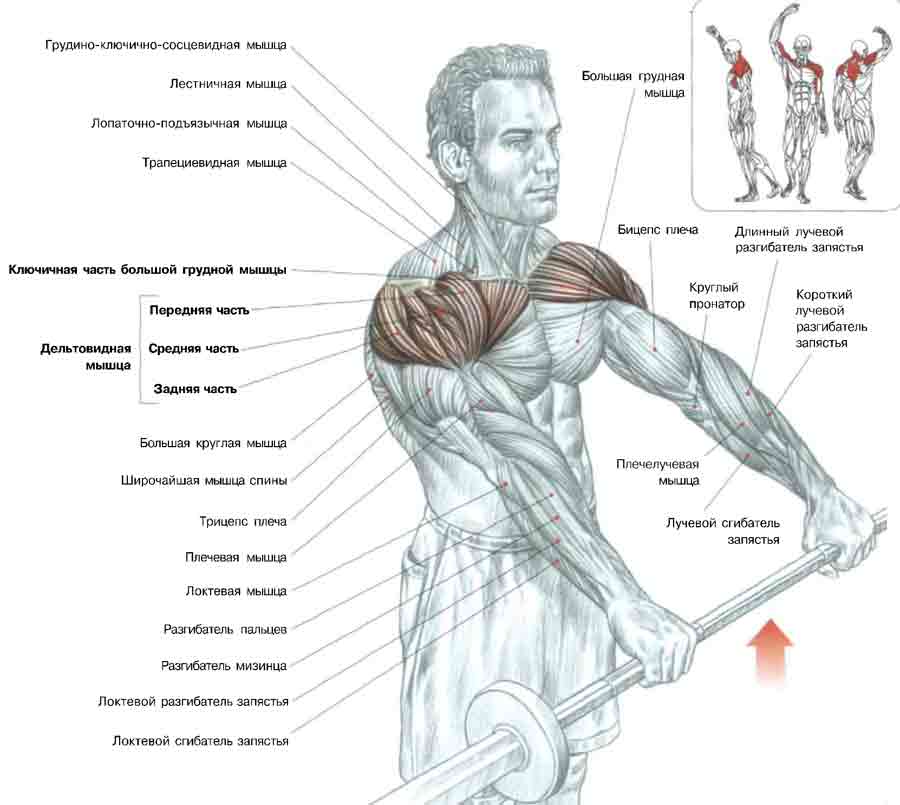
Mechanics of the exercise lifting the bar forward:
The exercise is performed in a standing position. Legs apart. Back straight, belly retracted. Keep the barbell bar at the bottom of the thighs, taking it slightly wider than the shoulders with a grip from above:
- take a breath and lift the barbell forward on your straight arms to eye level;
- at the end of the movement to make an exhalation.
10. Shoulder front broach
The shoulder anterior broach is one of the best exercises for the shoulders, this exercise directly involves the deltoid muscles, trapezius muscles and biceps, as well as additionally involves the muscles of the forearms, buttocks, Sacro-lumbar muscles and abdominal muscles.
This basic exercise allows you to achieve an athletic physique.

Mechanics of the exercise shoulder front broach:
The exercise is performed in a standing position. Legs apart. The back is straight. Keep the barbell bar at the bottom of the thighs, taking it slightly wider than the shoulders with a grip from above:
- take a breath and stretch the bar up along your body, raising your elbows as high as possible until the bar reaches your chin. Then slowly return to the starting position, straightening your arms;
- at the end of the movement to make an exhalation.
The deltoid muscle raises the arm to a horizontal position. The trapezius muscle further engages the scapula in this movement, allowing you to raise your arm even higher
Result
In this article, only the basic 10 exercises for training the shoulder girdle muscles are considered. These exercises allow you to effectively increase the muscle mass of the shoulder girdle. In addition to these 10 exercises, there are a lot of auxiliary exercises for the shoulder girdle muscles, performed in simulators and using blocks. These auxiliary exercises are mainly intended for a large drawing of the relief of the shoulder muscles.
Do not forget that a great help in building muscle mass of the shoulders is sports nutrition. You can buy sports nutrition in our store.
The illustrations for the article are taken from the book "Anatomy of strength exercises"by Frederick Delavier.
5 reviews / Write a review
